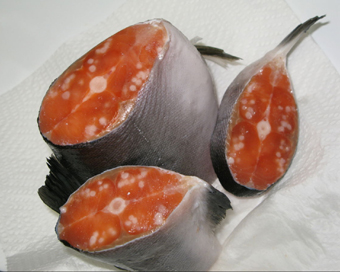Gallery
 PM Modi visit USA
PM Modi visit USA Only the mirror in my washroom and phone gallery see the crazy me : Sara Khan
Only the mirror in my washroom and phone gallery see the crazy me : Sara Khan Karnataka rain fury: Photos of flooded streets, uprooted trees
Karnataka rain fury: Photos of flooded streets, uprooted trees Cannes 2022: Deepika Padukone stuns at the French Riviera in Sabyasachi outfit
Cannes 2022: Deepika Padukone stuns at the French Riviera in Sabyasachi outfit Ranbir Kapoor And Alia Bhatt's Wedding Pics - Sealed With A Kiss
Ranbir Kapoor And Alia Bhatt's Wedding Pics - Sealed With A Kiss Oscars 2022: Every Academy Award Winner
Oscars 2022: Every Academy Award Winner Shane Warne (1969-2022): Australian cricket legend's life in pictures
Shane Warne (1969-2022): Australian cricket legend's life in pictures Photos: What Russia's invasion of Ukraine looks like on the ground
Photos: What Russia's invasion of Ukraine looks like on the ground Lata Mangeshkar (1929-2022): A pictorial tribute to the 'Nightingale of India'
Lata Mangeshkar (1929-2022): A pictorial tribute to the 'Nightingale of India' PM Modi unveils 216-feet tall Statue of Equality in Hyderabad (PHOTOS)
PM Modi unveils 216-feet tall Statue of Equality in Hyderabad (PHOTOS)The Badminton Association of India (BAI) has announced a 14-member-strong India squad for
- Men’s Sr Hockey Nationals to be played in division-based format from April 4
- Mensik denies Djokovic 100th title in Miami final
- KIPG: Son of a vegetable vendor, Bihar’s Jhandu Kumar eyes Worlds, 2028 Paralympics
- Hardik Singh credits hard work and team unity for receiving HI Midfielder of the Year award
- Djokovic, Alcaraz land in same half of Miami draw
First animal that lives without breathing oxygen discovered Last Updated : 26 Feb 2020 03:47:43 PM IST 
Parasite Hennenguya Salminicola A common assumption that all multicellular organisms must be breathing oxygen has now been proven wrong as researchers have accidentally discovered the first non-oxygen breathing animal.
The tiny, less than 10-celled parasite Henneguya Salminicola lives in salmon muscle, according to a study Proceedings of the National Academy of Sciences.As it evolved, the animal, which is a myxozoan relative of jellyfish and corals, gave up breathing and consuming oxygen to produce energy."Aerobic respiration was thought to be ubiquitous in animals, but now we confirmed that this is not the case," said Dorothee Huchon, Professor at Tel Aviv University in Israel."Our discovery shows that evolution can go in strange directions. Aerobic respiration is a major source of energy, and yet we found an animal that gave up this critical pathway," Huchon added.Some other organisms like fungi, amoebas or ciliate lineages in anaerobic environments have lost the ability to breathe over time.The new study demonstrated that the same can happen to an animal -- possibly because the parasite happens to live in an anaerobic environment.The parasite's anaerobic nature was an accidental discovery.While assembling the Henneguya genome, Huchon found that it did not include a mitochondrial genome.The mitochondria is the powerhouse of the cell where oxygen is captured to make energy, so its absence indicated that the animal was not breathing oxygen.Until the new discovery, there was a debate regarding the possibility that organisms belonging to the animal kingdom could survive in anaerobic environments.The assumption that all animals are breathing oxygen was based, among other things, on the fact that animals are multicellular, highly developed organisms, which first appeared on Earth when oxygen levels rose."It's not yet clear to us how the parasite generates energy," Huchon said."It may be drawing it from the surrounding fish cells, or it may have a different type of respiration such as oxygen-free breathing, which typically characterizes anaerobic non-animal organisms," Huchon said.The discovery bears enormous significance for evolutionary research, Huchon said.IANS New York For Latest Updates Please-
Join us on
Follow us on








172.31.16.186







